The presence of millions of Catholic immigrants in the United States from the late 19th to the early 20thcentury led to the phenomenal growth of Catholic schools. Hostility toward Catholicism in the public schools and a sturdy parish infrastructure created the groundwork for such schools to flourish. In the meantime, a network of Catholic colleges established throughout the country during the same period educated the priests, religious men and women, and laity who would service local Catholic populations in these burgeoning school networks.
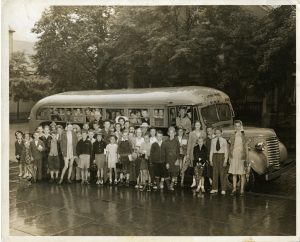
In 1965, U.S. Catholic parish school attendance reached its highest point at 4.5 million students. That same year, The Catholic University of America’s Department of Education became the School of Education, aimed at accommodating the expansion and professionalization of the field. By that time, more than one million students attended over 2,000 secondary Catholic schools. Catholic educators (both lay and religious) staffed urban elementary schools, trade schools, college preparatory schools, colleges, and schools accommodating a range of intellectual abilities. Many were staffed and run by graduates of Catholic University’s Education program. Even as the educational landscape shifted and many schools moved to the suburbs—in 1980 2.2 million students attended 7,800 parish schools—the University’s Department of Education continued training educators for leadership and teaching in Catholic educational institutions.
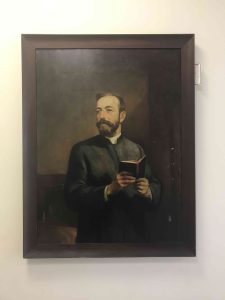
The University’s strong Department of Education began with two stellar educators in the early twentieth century: Edward Pace and Thomas Shields. Rev. Edward Pace was among the first faculty selected to teach at the new Catholic University of America in 1888. Concerned about meeting the instructional needs of the various schools of the University, Pace advocated for a Department of Education, which was approved by the University’s Board of Trustees in 1908. Rev. Thomas Shields was hired as an instructor in psychology in 1902. But his attention and research rapidly shifted to the field of education. In 1905, he designed correspondence courses and institutes for teaching sisters staffing the growing Catholic school system across the country. After the trustees approved the establishment of a Department of Education in 1908, Shields set up and chaired the new unit. He founded the Catholic Educational Review in 1910, and began publishing articles and books via the Catholic Education Press, which he also founded. He established and served as Dean of the Catholic Sisters College in 1911, organizing and running summer institutes for women religious at the University. Finally, the Program of Affiliation Shields created in 1912 sought to create a set of what we would today call best practices to which affiliate members—Catholic high schools and colleges—would adhere.
Shields’s own protégé, Rev. George Johnson (1889-1944), picked up the Catholic education baton from Shields when he died in 1921. Johnson became a professor in the Department of Education in 1921, and would also head the Department of Education of the National Catholic Welfare Conference in 1928, and the following year would be elected the Executive Secretary of the National Catholic Education Association (NCEA). Perhaps the most influential voice in American Catholic education throughout the Great Depression and Second World War, Johnson, like his predecessor, died young, at the age of 55, while delivering an address at Trinity College in 1944. As enrollment in the University grew in this period, so too did enrollment in education courses. From 1924 to 1930, University enrollment went from 680 students to 1,138; enrollment in education courses rose from 99 to 360 in that same period.
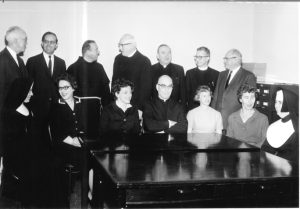
Growth and general academic reorganization spurred talk of turning the Department into a School. The idea was that education was a professional field meriting its own school, that becoming a school would facilitate accreditation processes, and that the Department not only prepared students for research and teaching, but prepared students for other aspects of education, such as administration and counseling.
In 1964, University Rector William McDonald asked the Board of Trustees to change the Department of Education to a School of Education, citing its unique needs as an expanding professional school. The Board unanimously approved the request.
The School of Education saw several Deans. Two, Dean Mary Sarah Fasenmyer (Dean, 1970-1973) and Dean Raymond Steimel (1973-1984) were particularly significant during the School of Education period. Fasenmyer served in several capacities at the University: she served as Director of the Curriculum Development Center, Assistant Professor in the School of Education, and Dean in the School of Education, all at the Catholic University of America in Washington, D.C. She oversaw the institution of several new programs as a result of studies of the School, including the institution of several specific concentrations of study leading to the M.A. and doctoral degrees, and the offering of both the Ph.D. and the Ed.D. degrees. Additionally, a Council on Teacher Education was established at the University to oversee teacher preparation programs there.
Dean Raymond Steimel managed a period of faculty expansion and stability. Undergraduate education, in particular, was emphasized, the Ed.D. program was eliminated, and the M.A. programs were reorganized. Steimel also oversaw the establishment of two endowed chairs as Dean: the International Federation of Catholic Alumnae established a chair in honor of St. Elizabeth Ann Seton, and the Euphemia Lofton Haynes Chair. The latter came as a result of a bequest of Lofton Haynes, the first African American woman to earn a Ph.D. in Mathematics in the U.S. (at The Catholic University of America), and a renowned educator in Washington, D.C.
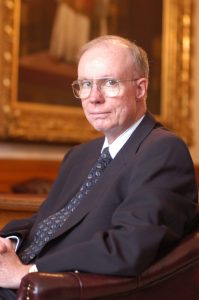
In 1984, William Byron, S.J., the President of the University from 1982-1992, released a memo to the Academic Senate titled “On Choosing Between and Among the Children.” Here, he ranked the eleven schools of the University with the aim of reorganizing their structure to fit with the mission of the University. Byron proposed that the School of Education become a department within the School of Arts and Sciences, arguing that a department would better integrate the priorities of the graduate and undergraduate programs, as well as connect the program with other disciplines at the University. In December, 1984, the School of Education voted in favor of a proposal to become a Department of Education within the School of Arts and Sciences. In early 1985, the Board of Trustees approved the department’s proposal. Ensuing changes had the effect of intermingling the teaching of graduate and undergraduate students in a way that made faculty more attentive to both groups. An Education Studies program was also instituted to train students who sought to teach in non-school settings, such as libraries, government organizations, and foundations.
The late 1980s through the twenty-first century saw the emphasis on grant-funded research projects emphasizing best practices in teacher education. The Council on Teacher Education evolved to represent and reflect the changing structure of the Department. Curricular and programmatic changes were made to reflect a renewed emphasis on teacher education, including the reintroduction of programs in Special Education and Early Childhood Education.
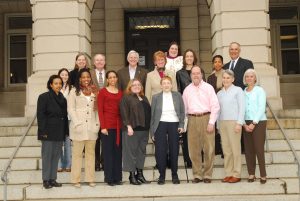
In many ways the history of the Department of Education reflects national trends, both in Catholic education in the United States, and in Catholic Colleges themselves. The Department expanded and centralized in the first half of the twentieth century, as did the Catholic school system in general during this time period. Catholic colleges, The Catholic University of America among them, played a key role in training both religious and lay teachers and administration for this Catholic school boom era. The contraction in enrollments in the Catholic school system has resulted in a streamlining of the Department of Education.
For much more on the history of The Catholic University of America’s Department of Education, see our online exhibit.
Sources:
The main source for this post and the online exhibit is: John J. Convey’s “The Catholic University Department of Education, 1908-2021 (Unpublished manuscript, 2021). Available in Special Collections, Archives, The Catholic University of America.
For general trends in U.S. Catholic education, see: James T. Carroll, “Catholic Education,” The Cambridge Companion to American Catholicism, Margaret M. McGuiness and Thomas F. Rzeznik, eds (Cambridge: Cambridge University Press, 2021).
